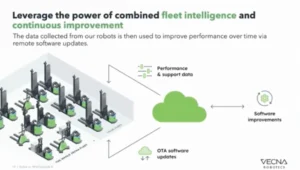Giving Marketers the Tools to Finally Conquer the Great “Marketing ROI” Challenge
Commentary:
“Marketing ROI” — scary words for marketing professionals, as getting a clear picture on how marketing campaigns directly relate to larger company KPIs is one of the most persistent challenges in the industry. Marketers are vocal about it, too. Marketing intelligence companies surveying marketers find that 80% of marketers self-report facing internal ROI pressures, yet 60% lack confidence in their marketing data, and 47% believe they don’t have the skills or ability to calculate ROI on their campaigns at all.
Why do marketers feel it’s so hard to measure and prove their ROI on marketing investments? Is it an internal miscommunication? Is it a lack of resources? Are campaigns themselves lacking the proper definitions for useful ROIs? Peter Mahoney, Founder and CEO of Plannuh, a marketing operations company, gave us his perspective on the challenges marketers claim to have around measuring ROI, and breaks down some ways to rethink marketing campaigns to make their impacts easier to analyze.
Abridged Thoughts:
So people often ask me why marketers think it’s so hard to measure and prove their return on investment for their marketing investments. It turns out that it seems simple, but it’s much more complex than you might think. First of all, what’s the big deal? It’s return divided by investment. That seems like a very simple equation. So let’s break it down a little bit and look at the individual elements to see what it takes to actually calculate ROI. First of all, on the return side, if you ask your CFO, the CFO would say that return is actually the marginal return of profit based on the investments that I made. And that’s not the language that marketing people think of most of the time. Best case, they think about revenue. Sometimes they think about pipelines, sometimes they think about leads. So you really need to translate that. So what happens if your campaign is focused on early stages of the sales funnel? You need to think about how that will translate to, ultimately, pipeline, to revenue, and then to marginal profit sometime in the future. And that can be difficult for people to do.








